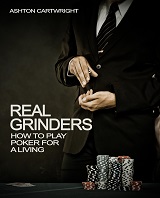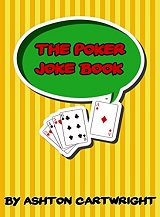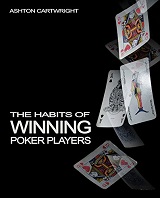How to Become a Professional Poker Player

Making a living from poker was a goal I set myself from the first moment that I encountered this game, and I am very satisfied with success I have had.
As to how I got interested in poker: I was an avid Magic the Gathering player for several years (nerd for life I’m afraid!), and had been making a small amount of money winning weekly Magic tournaments. At the time I was close friends with the reigning National Champion by the name of Tim He, who was virtually undefeated for several years. Tim stopped suddenly to pursue poker in preference to Magic, and almost immediately placed third in an AAPT at Sydney, winning several hundred thousand dollars.
The idea that there was a game that pays such amazing money was all the inspiration I required to make the switch. I quit Magic almost immediately, and decided to make a serious run at being a professional poker player. I game myself 2 years, and I said that if I wasn’t profitable enough to make a living from poker after that time that I would quit and find a different game.
My first step was to get an online account set up and play ONLY with play money. I told myself that I would not deposit a single dollar until I had won 100 times the play money chips that I started with. I was playing on Pokerstars at that point, and on that site you start with 1000 in play money chips. I (through poor bankroll management and lack of skill) lost that first 1000 chips once, and then a second time. Since I had now received a total of 3000 chips, and my goal was to make at least 100 times that amount, I set my target at 300,000 in play money chips. It took me approximately 45 days of almost constant play, but it assuredly taught me the fundamentals of poker, and how to play tight in particular (as I contend that tight play is the only effective strategy to use in play money games).
On the 3rd of April 2008 I made my first deposit online of $50. I had read all the Harrington books by then, and several of the Sklanzky books as well (I am an avid reader, and for 12 month allowed myself to read nothing but poker literature). I was acutely aware that strict bankroll management is one of the most important aspects of professional poker, so I never invested more than 2% of my bankroll in a single SNG or Tournament, and never more than 5% of my bankroll into a single cash game. Some players have more liberal bankroll management than this, and some have more conservative, but I found this acceptable.
At this level I was only able to play 1c/2c cash games, and SNGs and Tournaments of no more than $1 buy in. I had told myself that under no circumstances was I to ever make another deposit online, so I played as though this $50 was all the money I had in the world.
I found that I was most successful at the SNGs at this level, so that became my primary focus. As my bankroll grew to $100, then $500, then $1000, I continued moving up the limits, keeping always within the 2% requirements that I had set for myself. I played a great deal of Double or Nothing SNGs, and also 18 player SNGs, which I found to be quite profitable. I played comparatively few tournaments, simply because I found the variance and time commitment made them prohibitive.
I also made a conscious effort to steadily increase the number of tables that I played. Once I started playing more than 6 tables I got a 2nd computer screen, and once I was playing more than 12 tables I added another 2 screens to my hardware set up.
By the 2nd of February 2010 I was making enough consistent income to quit my job, about two months ahead of the 2 years I had set myself. At this point I was playing Double or Nothing SNGs almost exclusively, and paying sometimes as much as $20,000 of buyins per day, playing $100 Double or Nothing SNGs 24 tables at a time. My income was only about $50 per hour, which is not much in poker terms, but it was more than enough for me to live comfortably.
I still believe the Double or Nothing strategy I have outlined elsewhere to be the optimal strategy for that particular type of game, and I still believe that Double or Nothings can be among the most profitable forms of poker, particularly at the lower buyins (up to about $50). At the higher levels there are often multiple players on each table playing almost identical strategies, so it becomes a bit harder to show consistent profit there. As a novice, I believe Double or Nothings, when played with a proper strategy and understanding of stack size interactions, to be one of the most effective ways to build a bankroll.
I also feel that low level SNGs are an excellent bankroll builder for new players interested in that format. For low limit cash games, since players are generally loose at those stakes, a tight Set Mining strategy is the best strategy to use.
For me, becoming a professional poker player was a conscious decision that was only made possible by clear planning, constant study, discipline, and good bankroll management. There are many players who are superior to me in skill, yet fail in one of the above attributes (most commonly bankroll management).
For those who succeed in becoming a professional poker player, this life is fun, the hours flexible, and the financial remuneration often substantial. The other benefit of playing Cash Games is that you will likely learn the intricacies of the game much faster than if you restrict yourself exclusively to SNGs.
I wish you the best of luck, but more importantly, play well!



 Follow
Follow